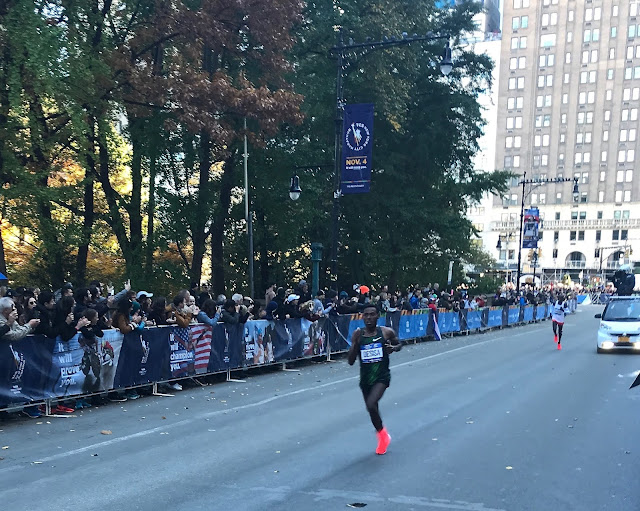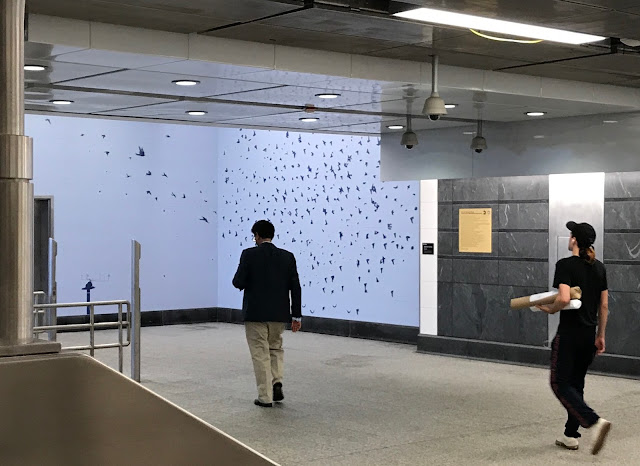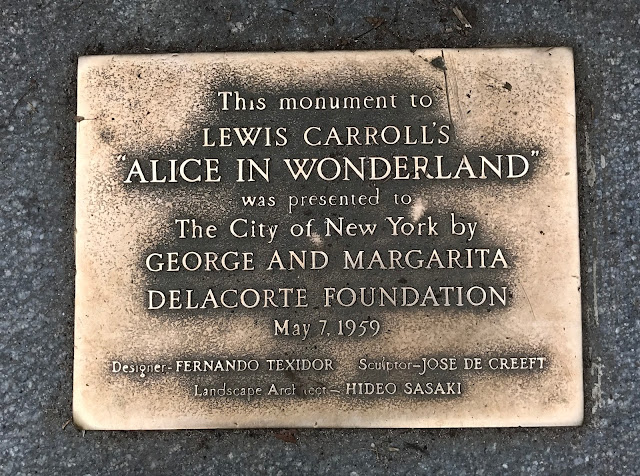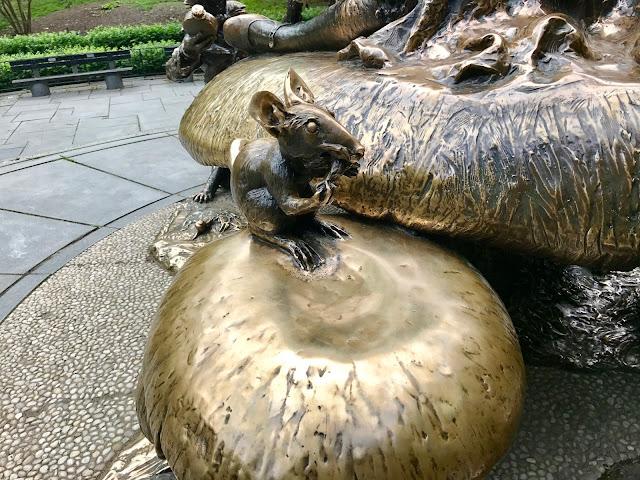As a lifelong New Yorker, the marathon can be a disorienting
experience. It’s not the closed streets and travel disruptions. Those are just
a typical weekend around these parts. No, it’s the festive atmosphere, the
general feeling of goodwill in the air, and all the encouragement that are so
jarring to one’s jaded sensibility.
Last year was my first time covering the race. I went to
Long Island City and realized that the marathon isn’t really a race. How many
of the thousands of spectators care who wins? How many leave and go home once
the winners reach Central Park just two hours into the festivities? None. There
was a live band, funny signs, constant cheering in a steady rain. This went on
for hours, and well after I was worn down by the cheer, everyone else’s spirits
remained high.
This year, I went to the Upper East Side’s
portion of the route. I looked for a good spot on First Avenue at 60th
Street to catch the leading women and men as they passed.
I got there early by my standards for a Sunday morning, but
apparently not by anyone else’s, because it was packed. As the trams to
Roosevelt Island steadily passed overhead next to the 59th Street
Bridge, I realized I would need to cross First Avenue for one of those sweet
empty spots up against the railing on the other side.
A cop told me to cross at 59th Street. As I
started my trek, I did my best to not let all the extra walking around
barricades and amid throngs of people get to me.
The walking was slow. I like to walk fast. But I made it
across and found an open spot near 61st Street, next to a woman who
had fastened a Spanish flag to the barricade. Its bright yellow sections popped
out and matched the leaves on the rows of trees going along First Avenue.
People stood on steps and benches, any spot they could get. But
there was no pushing or jostling. Everyone was polite, and friendly. What was
going on?
Cheers rippled up to us as a wheelchair participant
approached and passed. People were coming out onto their fire escapes for good
views. I didn’t see any funny signs, but a marching band could be heard a block
away, adding to the party.
There was no mention of politics anywhere. It was a nice
break, even as the midterms were days away.
There was one familiar comfort: the occasional cigarette
smoker, standing near me for the sole purpose of infuriating me and making sure
I couldn’t comfortably breathe. And to smoke near marathon runners? Come on.
Soon enough, a small group of the leading women came and
went, then the leading men passed by shortly after. It was exciting as each
group approached, but it lasted just a minute, then it was done, and it was
again clear that winning wasn’t what this was all about.
After the leaders passed shortly after 11 a.m., I decided to
head west on 59th to join the route near its end at the bottom of
Central Park.
Crossing First Avenue, I marveled at the blocked off street.
No cars! I could walk down the middle if I wanted.
Call it a kind of instant karma, but I then got into the
biggest pedestrian traffic jam I’ve ever experienced as I tried to walk on 59th
Street. Some were trying to get away from the route, others were trying to come
to it, as the sidewalk narrowed and too many were just standing and spectating,
not interested in moving.
Few things infuriate me more than traffic, but I had to
smile because of how silly the whole thing was. I was standing on a sidewalk
and couldn’t move, surrounded in every direction by blocked off streets. Don’t
worry, I thought, this is part of the experience. Of course, next time I’ll be
sure to go up another block and walk across 58th Street.
(Runners entering Manhattan from the 59th Street Bridge)
It was easier to find a good spot along 59th Street
at the base of the park. I missed the leading women but saw the winning man,
Lelisa Desisa, pass by just minutes before his victory.
That was pretty cool. But again, hardly the point. New York
City loves a winner, loves the biggest and the best. But those words don’t
matter as much for this particular New York spectacle.
My dad ran the marathon in 1979 and ’80, so I’ve heard tales
of doing it for the challenge and sense of accomplishment. Back then, there
were just over 11,000 participants, while these days there are over 50,000
every year. Now there are corporate sponsors, as would be expected.
And yes, it is the biggest and perhaps most famous marathon
in the world, just the way New York would want it. But only when I finally went
in person, to hear the joyful cheers for people who wouldn’t win and would
never be famous, did I understand why it’s special.





















































